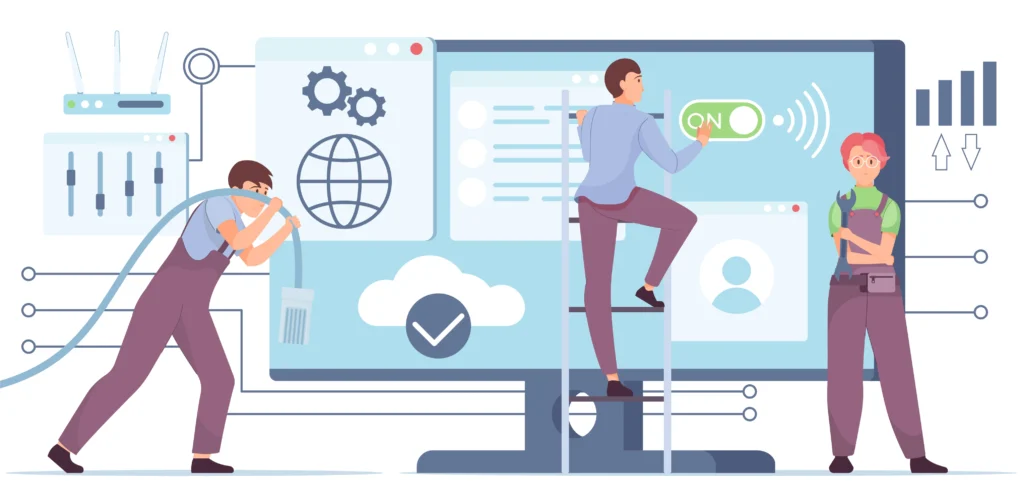Even the most advanced security systems can be compromised by one simple oversight: unpatched software. Once a vulnerability is discovered, it becomes public knowledge, and cybercriminals move quickly to take advantage. Unfortunately, many organizations delay updates because patching can feel tedious, disruptive, or resource-heavy.
That’s where automating patch management makes a difference. By removing the manual burden of tracking, testing, and deploying patches, automated solutions ensure updates are applied consistently and on time. The payoff is stronger security, smoother operations, and confidence that your systems are never left exposed.
What Is Patch Management?
Patch management is the process of identifying, testing, and applying updates to software, operating systems, and applications. These patches often fix security vulnerabilities, resolve bugs, and improve performance.
Without proper patch management, organizations are left exposed to cyberattacks, downtime, and compliance risks. Automating this process ensures updates happen seamlessly, without relying on manual intervention.

Why Manual Patch Management Falls Short
For many small and mid-sized businesses, patch management is still a manual or semi-manual process. This creates several problems:
- Delayed Updates: IT staff are often overloaded, leaving patches uninstalled for weeks or months.
- Human Error: Missing a critical update can leave the system open to attack.
- Downtime: Scheduling manual updates often interrupts operations.
- Lack of Visibility: Without centralized reporting, it’s hard to know if all systems are truly up to date.
Automating patch management solves these issues by standardizing and streamlining the process.
Benefits of Automating Patch Management
1. Enhanced Security
Automated systems deploy patches quickly across all devices, reducing the window of opportunity for hackers. Since many breaches exploit known vulnerabilities, closing these gaps early is essential.
2. Reduced Downtime
Updates can be scheduled during off-hours, minimizing disruption to daily business operations. This keeps employees productive while ensuring systems stay secure.
3. Improved Compliance
Industries like healthcare, finance, and government face strict compliance regulations (HIPAA, PCI DSS, GDPR). Automated patching provides documentation and audit trails that help meet these requirements.
4. Cost Savings
By preventing costly breaches, downtime, and manual labor hours, automation reduces the overall cost of IT management.
5. Scalability
As your business grows, managing hundreds of devices manually becomes impossible. Automated tools scale effortlessly, applying updates across large networks without extra effort.
How Automated Patch Management Works
Automated patch management tools follow a systematic process:
- Discovery and Inventory
The tool scans your network to identify all devices and applications, ensuring no system is overlooked. - Patch Identification
It compares software versions with available updates from vendors, flagging critical vulnerabilities. - Testing and Approval
Some tools allow IT teams to test patches in a controlled environment before wide deployment, reducing risks. - Automated Deployment
Approved patches are installed across devices according to your schedule and policies. - Reporting and Compliance
Comprehensive reports show which systems are updated, highlighting any exceptions.
Best Practices for Automating Patch Management
1. Establish a Patch Policy
Define clear policies around how quickly patches should be deployed (e.g., critical updates within 48 hours).
2. Prioritize Critical Updates
Not all patches are equally urgent. Automation tools can rank updates by severity, ensuring high-risk vulnerabilities are addressed first.
3. Test Before Deployment
Critical patches should be tested in a small environment before company-wide rollout to avoid compatibility issues.
4. Schedule Strategically
Automated tools let you deploy patches during low-usage hours to minimize interruptions.
5. Monitor and Report
Regular reporting ensures compliance, tracks performance, and helps IT leaders demonstrate ROI.
Challenges of Automating Patch Management
While automation is powerful, businesses must address common challenges:
- Compatibility Issues: Some updates may conflict with existing software. Testing mitigates this.
- Overconfidence: Automation isn’t “set it and forget it.” IT teams still need oversight.
- Complex Environments: Businesses with hybrid or legacy systems may need specialized tools.
By combining automation with human oversight, businesses can achieve the best of both worlds.
Patch Management in Cybersecurity Strategy
Automated patch management should be part of a broader cybersecurity strategy. Firewalls, antivirus, intrusion detection, and employee training all play vital roles, but without updated systems, they lose effectiveness.
According to the Verizon 2025 Data Breach Investigations Report, unpatched vulnerabilities remain one of the most common entry points for attackers. Automating patch management helps eliminate this risk.
Real-World Example: The Cost of Delayed Patching
Consider the 2017 WannaCry ransomware attack, which exploited a vulnerability in Windows systems. Microsoft had released a patch months earlier, but many organizations failed to apply it. The result was a global crisis that cost businesses billions in damages.
Automated patch management ensures that critical updates like this are never overlooked.
Tools for Automating Patch Management
Businesses can choose from a variety of solutions, including:
- NinjaOne – Simplifies patch automation with centralized management.
- Microsoft Intune – Ideal for organizations already using Microsoft ecosystems.
- ManageEngine Patch Manager Plus – Offers detailed reporting and testing capabilities.
- SolarWinds Patch Manager – Scales well for larger enterprises.
The right tool depends on your environment, budget, and compliance needs.
How Dymin Helps with Automated Patch Management
At Dymin, we specialize in implementing automated patch management as part of our managed IT services. Our team ensures your systems are always updated, secure, and compliant. From setup to reporting, we handle the details so you can focus on running your business without worrying about vulnerabilities.
Ignoring updates is like leaving your front door unlocked for cybercriminals. Manual patching is no longer realistic in today’s complex environments, but automation makes staying secure simple and reliable.
By adopting automated patch management, your business will:
- Close security gaps faster
- Save time and resources
- Stay compliant with industry regulations
- Protect productivity and customer trust
Ready to strengthen your business security with automated patch management? Contact us today to learn how Dymin can streamline your IT processes and keep you protected.
